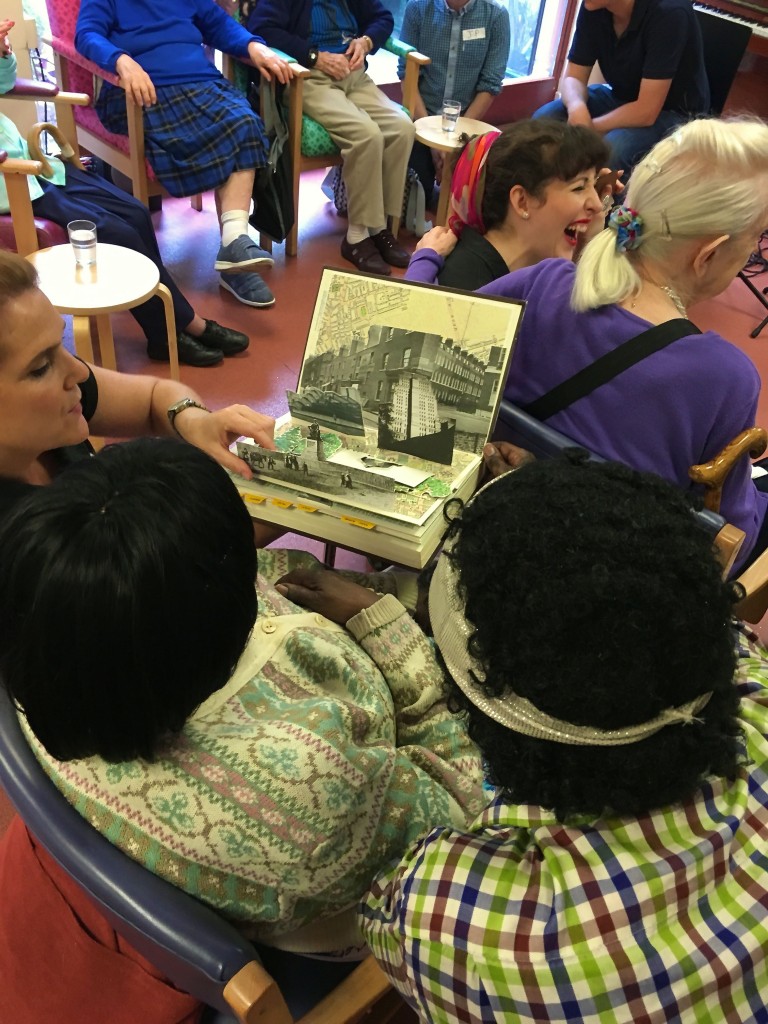There have been some important developments on the Bloomsbury Festival in a Box project over the past few months. Two and a half years on from the original AHRC award, and in the same year that the AHRC have published the Cultural Value Project’s Final Report the project continues to grow and develop. In collaboration with Age UK Camden’s Dementia Befriending Service and funded by the St Andrew Holborn Trust, the box has been going out on visits once again into the homes of people living alone with dementia in the Bloomsbury area. It has also been taken into an Age UK community Resource Centre for people with memory problems.
No longer a research project per-se (although continuing to inspire my own research practice) the Festival in a Box initiative has now become an embedded part of the Bloomsbury Festival’s year-round programme of community outreach. Some Bloomsbury Festival in a Box collaborators have returned to take part in this new round of visits and some new ones have emerged. New art has been produced, too, as the box itself is customized, developed and given a new lease of life.
Mapping Bloomsbury: from box to book
 In early planning meetings around the next stages of the FIAB project, it was decided that it was important for the box itself to develop, and for new artwork to be created based on the ‘archives’ collected by the first round of visits in 2013-2014. We felt that it was important to continue to open up the box to new artists as a source of reference and inspiration.
In early planning meetings around the next stages of the FIAB project, it was decided that it was important for the box itself to develop, and for new artwork to be created based on the ‘archives’ collected by the first round of visits in 2013-2014. We felt that it was important to continue to open up the box to new artists as a source of reference and inspiration.
An artists’ brief was developed and, after a process of selection, the artist Emily Tracey was commissioned to create a new piece of artwork that would ‘add interest and magic to the project’. Emily – a long-term collaborator with the Bloomsbury Festival – looked though the project blog and ‘open archives’ collected on this website for inspiration for the commission. She was also provided with some quotes about Bloomsbury from interviews with project participants in 2014.
Emily’s brief was to create a ‘map’ of the Bloomsbury area. Taking an old Webster’s Dictionary (reflecting the Bloomsbury Festival’s 2016 ‘language’ theme), she has created book which ‘maps’ Bloomsbury through a series of pop-up tableau and collaged fragments.
 Local landmarks and points of reference have been carefully researched, partly from the FIAB archives, and a new richly layered visual and textual map has been created. This ‘map’ blends familiar reference points such as the British Museum and the University of London’s Senate House with less obvious prompts, including a sign for the No5 bus, the old Tea Rooms on Museum Street, Alan L. Durst’s sculpture ‘Comedy and Tragedy’ from the doorway to the Royal Academy of Dramatic Arts.
Local landmarks and points of reference have been carefully researched, partly from the FIAB archives, and a new richly layered visual and textual map has been created. This ‘map’ blends familiar reference points such as the British Museum and the University of London’s Senate House with less obvious prompts, including a sign for the No5 bus, the old Tea Rooms on Museum Street, Alan L. Durst’s sculpture ‘Comedy and Tragedy’ from the doorway to the Royal Academy of Dramatic Arts.
New Definitions
On the cover of the book I was delighted to find that Emily had used an image of the 1975 Bloomsbury Fair poster that I had come across in the Camden archives during the original Festival in a Box project.
Inside the book, I found that Emily had woven in quotes from participants we engaged with on the first round of visits, including the important argument, which I have blogged about elsewhere, that we should think of the Bloomsbury Festival, also ‘always [as] the Bloomsbury Fair’

In the Festival in a Box project report I wrote about the importance of the stories collected during the project and stored in the FIAB archives continuing to be integrated back into the Bloomsbury Festival, as a way of integrating them into the broader community. Emily’s artwork, in a simple but effective way, achieves precisely that. By drawing together material from the visits, including direct quotes from the participants themselves, and working them back into a book, she has created a pop-up, cut up, dictionary.
Read properly, this dictionary might provide a new definition of the word Bloomsbury.
Opening the book, opening the box
 The book is a beautiful, sensitively created object. But of course this new artwork was created not just to look good, but to be used.
The book is a beautiful, sensitively created object. But of course this new artwork was created not just to look good, but to be used.
Over the past couple of weeks the project team has taken the Bloomsbury Festival in a Box to a Resource Centre in Bloomsbury ‘for over 60s who are at risk, isolated, lonely or housebound’. The team of creative people assembled by the Bloomsbury Festival sang songs, performed live music, and undertook some writing activities with people at the centre. Emily’s book made its début, and was passed around as a prompt for conversation, fascination and (where possible) reminiscence.
The picture above shows people gathered around the book, working their way through the pages and the stories of Bloomsbury that they contain. For me, this demonstrates the Festival in a Box project coming full-circle.
The artists who we assembled for the first round of the project have returned, along with new ones. The archive materials and stories that we gathered in 2014 have provided inspiration for new art, new points of connection and engagement. The box itself, having toured around the UK, has come back to Bloomsbury and into the lives of a new set of people isolated by old age and memory problems.
With the box’s return, and its new capacity to ‘pop up’ around Bloomsbury, come new possibilities for connection and collaboration. I hope that it will also create new possibilities for community.


Recent Comments